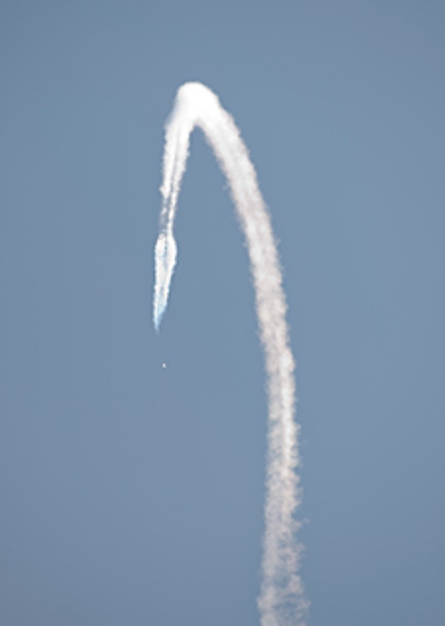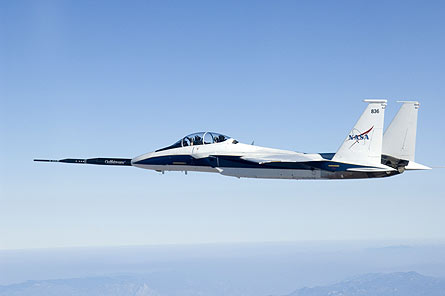Along with NASA and several universities, Gulfstream next week will continue its research into the effects of sonic boom strength on people and places, steps designed to help quantify whether an overland supersonic business jet will be palatable to the public in the future.
The latest tests, set to take place on 9 September and 12 September, will feature two NASA F/A-18 aircraft flying multiple pre-defined supersonic trajectories high over Edwards Air Force Base in California to simulate various levels of sonic boom noise on earthbound structures.
 |
|---|
A NASA F/A-18 dives toward a targeted area of Edwards AFB during a SonicBOBS calibration flight in June (NASA Photo / Tom Tschida) |
Called sonic booms on big structures (sonicBOBS), the test will include four instrumented larger buildings at the Air Force flight test centre museum at Edwards. NASA says pressure transducers in the buildings will measure “momentary overpressure” from sonic booms ranging from inaudible to 9.76kg/m2 (2lb/ft2) as the two F/1A-18s fly straight and diving profiles between 9,754m (32,000ft ) and 14,935m.
Current Federal Aviation Administration (FAA) rules prohibit overland supersonic flight, though NASA says a “resurgent interest in the last 10 years by aerospace companies in supersonic business jets that could cruise supersonically over land” has prompted new developments. Both the NASA / Northrop Grumman shaped supersonic demonstration in 2003 and the NASA / Gulfstream quiet spike project in 2006 have shown that sonic boom intensity can be suppressed, softening the effect of the pressure wave on the ground, says NASA.
Gulfstream has maintained that it will not launch a program until the FAA changes its rules. For its part, the FAA has held two public workshops to discuss boom quieting technologies, the most recent of which was in March.
 |
|---|
Gulfstream Quiet Spike during testing |
NASA says the earlier building tests showed that “window rattle and other contact-induced acoustic sources are important aspects of the high frequency response inside a building subjected to sonic booms”. In fact, the agency notes that research showed that indoor noise from sonic booms might be more annoying that the same booms heard outdoors.
Source: FlightGlobal.com
















